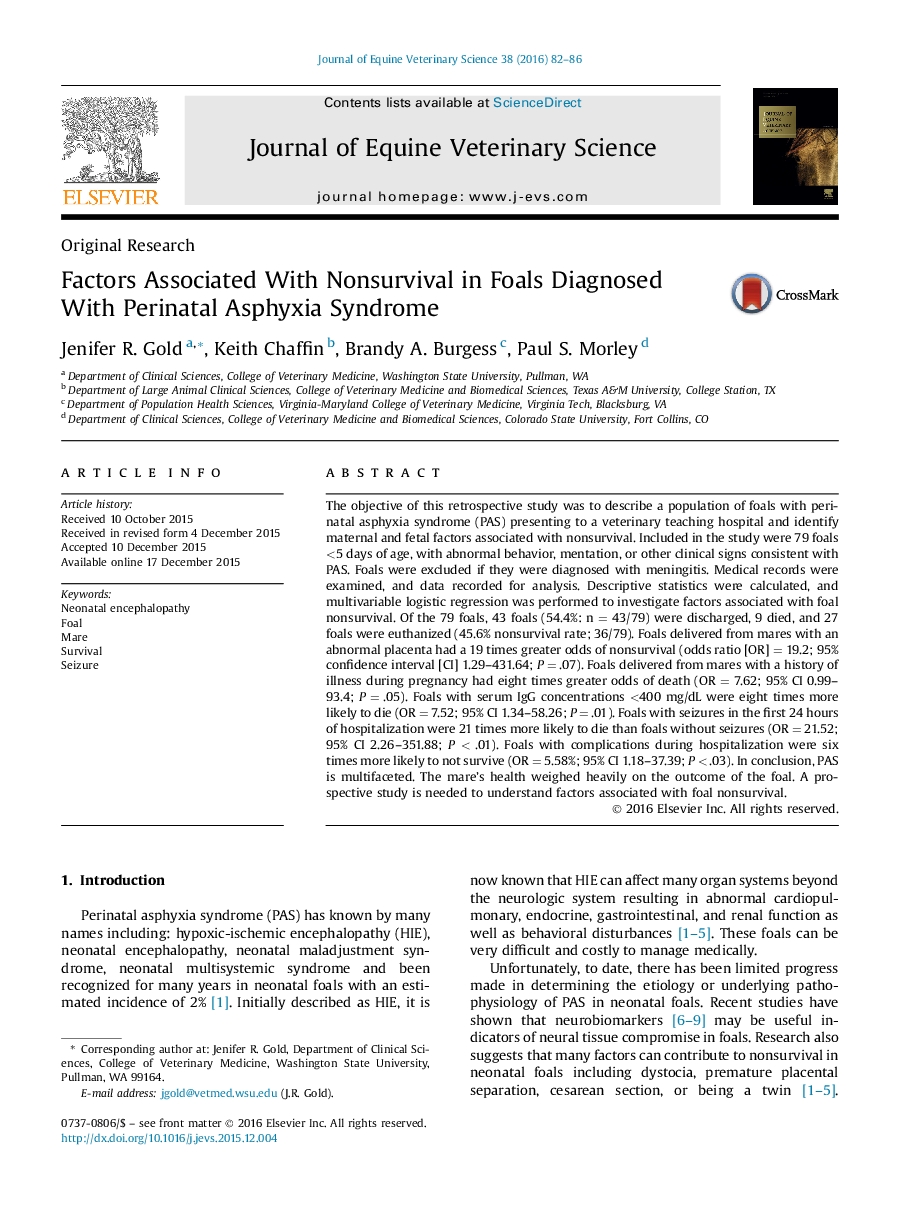| کد مقاله | کد نشریه | سال انتشار | مقاله انگلیسی | نسخه تمام متن |
|---|---|---|---|---|
| 2394590 | 1551562 | 2016 | 5 صفحه PDF | دانلود رایگان |
• The mare's health greatly impacts outcome of live healthy foals.
• Foals with seizures in the first 24 hours were 21 times more likely to die than foals without seizures.
• Foals delivered from mares with an abnormal placenta had a 19 times greater odds of nonsurvival.
• Foals with complications during hospitalization were six times more likely to not survive than foals without complications.
• Perinatal asphyxia syndrome is multifaceted.
The objective of this retrospective study was to describe a population of foals with perinatal asphyxia syndrome (PAS) presenting to a veterinary teaching hospital and identify maternal and fetal factors associated with nonsurvival. Included in the study were 79 foals <5 days of age, with abnormal behavior, mentation, or other clinical signs consistent with PAS. Foals were excluded if they were diagnosed with meningitis. Medical records were examined, and data recorded for analysis. Descriptive statistics were calculated, and multivariable logistic regression was performed to investigate factors associated with foal nonsurvival. Of the 79 foals, 43 foals (54.4%: n = 43/79) were discharged, 9 died, and 27 foals were euthanized (45.6% nonsurvival rate; 36/79). Foals delivered from mares with an abnormal placenta had a 19 times greater odds of nonsurvival (odds ratio [OR] = 19.2; 95% confidence interval [CI] 1.29–431.64; P = .07). Foals delivered from mares with a history of illness during pregnancy had eight times greater odds of death (OR = 7.62; 95% CI 0.99–93.4; P = .05). Foals with serum IgG concentrations <400 mg/dL were eight times more likely to die (OR = 7.52; 95% CI 1.34–58.26; P = .01). Foals with seizures in the first 24 hours of hospitalization were 21 times more likely to die than foals without seizures (OR = 21.52; 95% CI 2.26–351.88; P < .01). Foals with complications during hospitalization were six times more likely to not survive (OR = 5.58%; 95% CI 1.18–37.39; P < .03). In conclusion, PAS is multifaceted. The mare's health weighed heavily on the outcome of the foal. A prospective study is needed to understand factors associated with foal nonsurvival.
Journal: Journal of Equine Veterinary Science - Volume 38, March 2016, Pages 82–86
